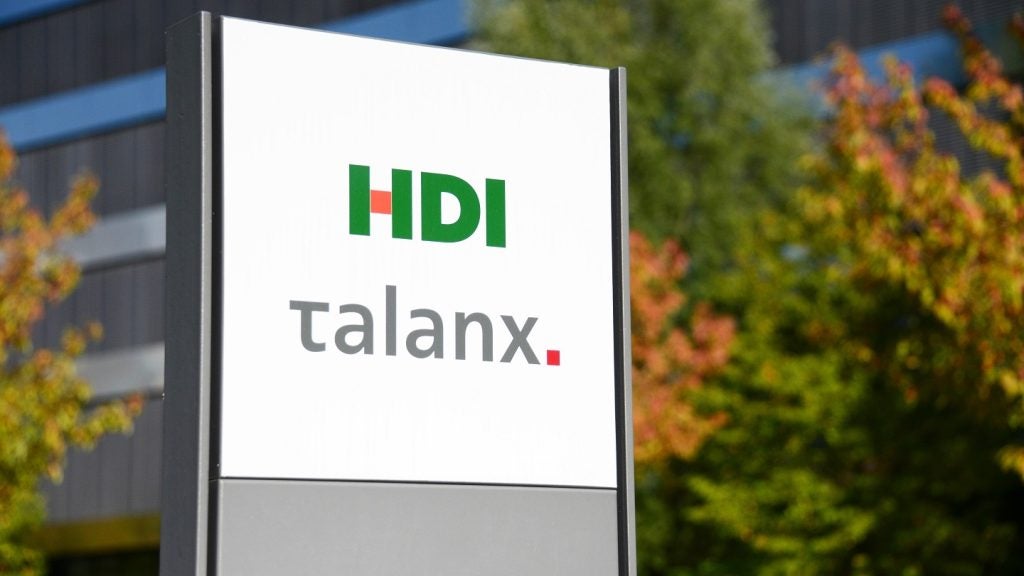
Strong economic fundamentals and rising life expectancy mean the prospects for the life insurance markets in South Africa, Angola and Botswana are promising, according to data from Timetric’s Insurance Intelligence Center (IIC).
Africa’s life insurance market is far ahead of other Afri¬can countries in terms of gross written premium, which stood at ZAR 367.64bn($30.1bn) in 2013 and is expected to rise to ZAR 625.71bn in 2018.
This is according to the report Life Insurance in South Africa, Key Trends and Opportunities to 2018 that is available at the IIC.
While South Africa makes up the largest share of Southern Africa’s GDP, this is followed by Angola, Botswana and Mozambique, according to data provider, Regional Strategic Analysis and Knowledge Support System (ReSAKSS). The importance of these three markets is the rationale for analysing the trends and outlooks in each life insurance sector.
The South African insurance industry is the largest in Africa and the country’s life insurance segment accounted for 80% of the continent’s total gross written premium for life insurance in 2012.
South Africa’s life segment is mainly driven by retirement savings and pension funds, which accounted for around 35% of savings and investment objectives in 2012.
How well do you really know your competitors?
Access the most comprehensive Company Profiles on the market, powered by GlobalData. Save hours of research. Gain competitive edge.

Thank you!
Your download email will arrive shortly
Not ready to buy yet? Download a free sample
We are confident about the unique quality of our Company Profiles. However, we want you to make the most beneficial decision for your business, so we offer a free sample that you can download by submitting the below form
By GlobalDataLooking ahead to 2018, the key growth drivers in the South African life insurance market include:
- Economic growth
- Domestic companies making presence in other countries
- High crime rates
- Increasing life expectancy
Economic growth : Since the end of the apartheid regime in 1998, South Africa has experienced unprecedented GDP growth. According to the IMF, South African GDP at current prices stood at ZAR3.2trn in 2012, after increasing at a CAGR of 8.9% during 2008-2012.
The country’s GDP is expected to maintain this momentum at CAGR of 2.9% between 2013-2018, supported by growth in mining exports, growing trade in agricultural commodities, and the rapid rise of the services sector.
Domestic companies making presence in other countries: The life segment in South Africa is mature, with a penetration rate of 10.54% in 2013, leaving little scope for growth for life insurers. To increase their customer bases, domestic insurers have started to look to opportunities outside the countries, either through acquiring stakes in, or forming partnerships with, foreign insurers.
For example, in February 2014, Sanlam Insurance Company acquired 71.2% stake of Oasis Insurance Company, a Nigerian stock exchange-listed company.
Similarly, in 2013, Old Mutual Insurance Company acquired Gha¬na-based insurer Provident Life Insurance Company.
High crime rates: A notable increase in crime was recorded In South Africa during 2009-2013 for example:
Incidents of murder rose from 15,609 in 2012 to 16,259 in 2013, a 4.2% increase. Meanwhile, the number of hijacked vehicles reached 9,990 in 2013, up by 5.4% over the previous year
Increasing life expectancy and higher employment opportunities: Increasing life expectancy was a key growth driver in the South African life segment during 2009-2013.
It rose from 52.6 years in 2007 to 56.3 years in 2012, and is pro¬jected to increase further with improvements in health measures and new anti-retroviral medication for HIV patients.
Government initiatives to increase employment, along with the rise of the private sector in the economy, are expected to create new employment opportunities, contributing to the growth of the life insurance segment.
South Africa’s life insurance market also faces numerous challenges. These include:
- The implementation of the Solvency Assessment and Manage¬ment (SAM) framework
- Fragmented nature of the segment
- Increasing commission rates for insurance intermediaries
The implementation of SAM
To enhance financial soundness and increase the participation of South African insurers in the global insurance industry, the FSB is implementing SAM in both long- and short-term insurance.
The system, expected to be fully implemented in 2016, will be based on Solvency II in Europe, with a few changes to make it suitable for South Africa. Key impacts of SAM are stricter data governance requirements, a greater need for data, annual own risk and solvency assessments, and enhanced quality of reporting.
The high costs and complexity involved with the launch of SAM are expected to be a challenge for smaller insurers, and some may find it difficult to continue to operate, leading to mergers, acquisitions and consolidation in the insurance industry.
Fragmented nature of the segment: The South African life segment is fragmented, with a large number of insurers leaving little scope for new entrants. The high number of existing insurers means that only new insurers with strong brands are likely to successfully enter the segment.
Increasing commission rates for insurance intermediaries: Distribution costs affect the segment’s profitability. The commissions paid for distributing life products rose from ZAR11.4bn in 2009 to ZAR17.3bn in 2013.
Commenting on South Africa’s life insurance industry, Willem Loots, a director of insurance at Fitch Ratings, says life insurers are increasing their focus on customer centricity.
Loots says: "From a distribution perspective, this includes an emphasis on the customer being able to choose how to buy insurance and how to interact with life insurers.
He adds: "The South African life market is more open now to direct offerings. We expect to see the traditionally intermediated insurers to expand their direct distribution capabilities."
Angola Focus
Shifting to Angola, this is the fifth-largest economy in Africa and is ranked among the fastest-growing economies globally, with an annual GDP growth averaging 11.6% during 2002-2011, according to IMF.
Led by stable economic growth and a progressive regulatory envi¬ronment, the Angolan insurance industry, which is the sixth-largest in Africa in terms of gross written premium, witnessed strong growth during 2009-2013. according to the Timetric report, The Insurance Industry in Angola, Key Trends and Opportunities to 2018, which is available at the Insurance Intelligence Center.
The life insurance segment accounted for the lowest share of the total Angolan insurance industry gross written premium in 2013, with 4.3%, and a value of AOA4.8bn ($44m).
The segment registered a slower growth when compared to the non-life and personal accident and health insurance segments, with the primary reason for this being a lack of awareness, and Angolan culture prioritizing saving and investments.
The Angolan life insurance segment is expected to increase in value at a compound annual growth rate of 13.2% over 2013 to 2018 from AOA4.8bn in 2013 to AOA9bn in 2018 in terms of gross written premium.
Looking ahead to 2018, the key growth drivers for Angola’s life insurance industry include:
- An increase in the number of insurance companies
- Economic growth
- Increasing population and life expectancy
- An increase in the number of insurance companies
After the industry’s liberalization in 2000, the number of insurance companies operating in the Angolan insurance industry increased from seven in 2008 to 15 in 2013.
In addition, the number of mediators and brokers rose from 12 in 2008 to 21 at end of 2010, with 11 in the process of requesting licenses.
The growth in the number of companies and brokers signifies the industry’s attractiveness in terms of growth potential.
Economic growth
According to the African Development Bank Group, the GDP of Afri¬ca’s second biggest oil producer grew by 5.1% in 2013, below the hoped for 7.1%.
However, growth is projected to reach 7.9% in 2014 and 8.8% in 2015 as major public infrastructure investment kicks in.
Increasing population and life expectancy: The Angolan population increased at a CAGR of 2.9%, going from 16.6m in 2009 to 18.6m n 2013.
Over 2013-2018, a rise in healthcare expenditure per capita from AOA434.8bn in 2009 to AOA864.2bn in 2018, coupled with increasing population and life expectancy rates will drive the demand for both life and personal accident and health insurance coverage.
Like any market, Angola’s life insurance industry also faces challenges. These include:
- A lack of diversification in products
- A high dependency on oil
- High unemployment rates and poverty levels
A lack of diversification in products : Angola’s life insurance industry is largely skewed towards the non-life segments in terms of earnings, as the life insurance segment is still in a developmental phase, with the lack of awareness for the necessity of insurance also being a key challenge.
A high dependency on oil
The Angolan economic growth and fiscal sustainability is highly dependent on oil revenues, therefore making the economy prone to developments in the global economy.
This fact was highlighted by the global financial crisis, which result¬ed in a decline in oil prices, leading to GDP growth declining from 13.8% in 2008 to 2.4% in 2009.
High unemployment rates and poverty levels: Angola was ranked 148th out of 187 countries on the UN Human Development Index (HDI) in 2012. According to the HDI, 54.3% of the population still lives below the poverty line of AOA119 (US$1.25) per day.
Slow economic growth, which mostly depended on oil sector revenues, has pre¬vented much-needed job creation.
Competitive landscape
The Angolan insurance industry is highly concentrated, with the three leading competitors accounting for 93% of the total market share. AAA Insurance is the market leader, with a 40% share of the total gross written premium in 2012.
The second-largest insurer is Empresa Nacional de Seguros e Resse¬guros de Angola (ENSA).
In terms of gross written premium, ENSA accounted for 37.0% of the insurance industry’s market share in 2012, and the company increased its market share from 30% in 2011 to 37% in 2012.
GA Angola Seguros SA was the industry’s third-largest insurer, with a market share of 16% of the gross written premium in 2012
Botswana focus
The outlook for the Botswanan life insurance segment is positive and the market is expected to increase from BWP3bn ($302.3m) in 2013 to BWP5.3bn in 2018, in terms of gross written premium.
The Botswanan insurance industry is dominated by the life segment, which constituted 70% of the total gross written premium at the end of 2013.
It was followed by non-life insurance with a 28.6% share, and personal accident and health insurance with 1.4%.
Looking forward to 2018, the key growth drivers for Botswana’s life insurance market includes
- Upper-middle-income status generating demand for insurance
- Less corruption encourages more transparency
Upper-middle-income status generating demand for insurance: According to the African Development Bank Group, Botswana’s economic performance improved in 2013, with real GDP growth estimated to have increased to 5.4% from 4.2% in 2012, with short-term forecasts through to 2015 remaining sound, premised on improved prospects in the predominant diamond industry.
Less Corruption: According to African Economic Outlook, Bot-swana was one of the least corrupt countries in Africa, followed by Namibia and Ghana in 2013.
Low levels of corruption along with a transparency in the system are expected to encourage foreign insurers intending to operate insurance business in Botswana.
In terms of challenges facing the market, the IIC report notes these include:
- HIV/ AIDS reducing life expectancy
- High unemployment
HIV/ AIDS reducing life expectancy: Botswana has the world’s sec¬ond-highest prevalence of HIV/AIDS in the world, which threatens its economic growth and social progress.
High unemployment: A major challenge in Botswana is its high unemployment rate, which was one of the world’s worst in 2013.
According to a survey by Gallup, the unemployment rate in Botswana stood at 17% in 2013. Around 25% of the working-age population, aged 15-69 years, is unemployed, while 35% of the population is either unemployed or underemployed. Therefore, this may adversely impact the life insurance industry in Botswana.
Competitive landscape
The Botswanan insurance industry comprises both life and general insurers. As of 2012, there were seven life insurers and 12 non-life insurance companies operating in the country.
The life segment is highly concentrated, with the two leading insur¬ers accounting for 87.9% of the total gross written premium in 2012, up marginally from 87.5% in 2011.
Botswana Life Insurance was the leader with a 76.1% share, fol¬lowed by Metropolitan Life Botswana with 11.8% and Absa Life with 5.5%. The remaining 6.6% was divided among three insurers.







